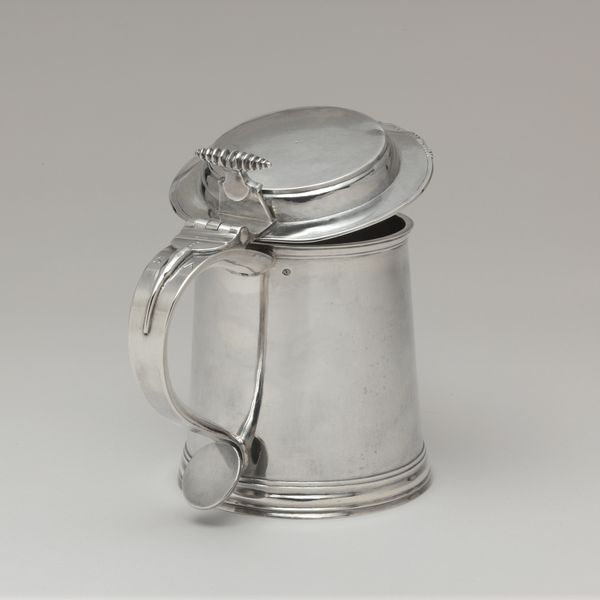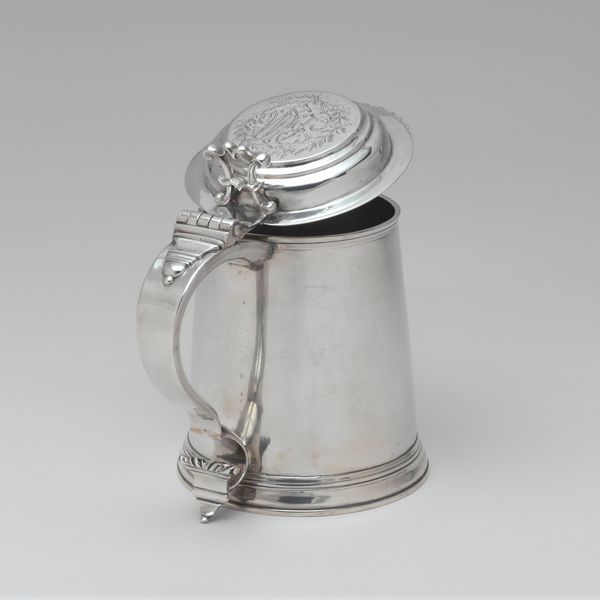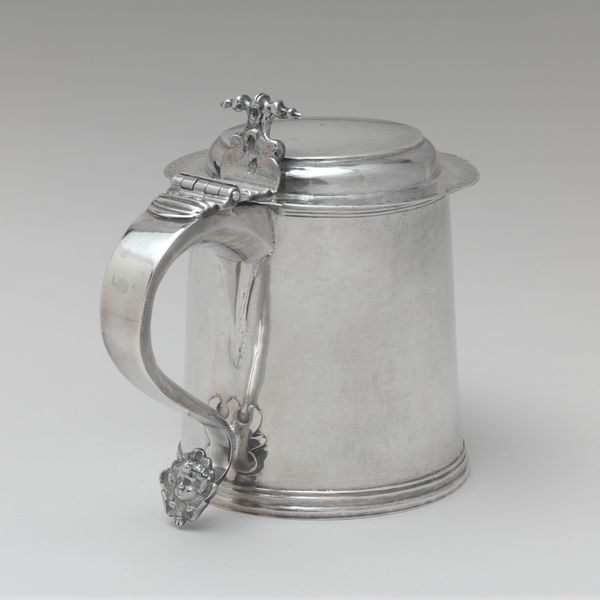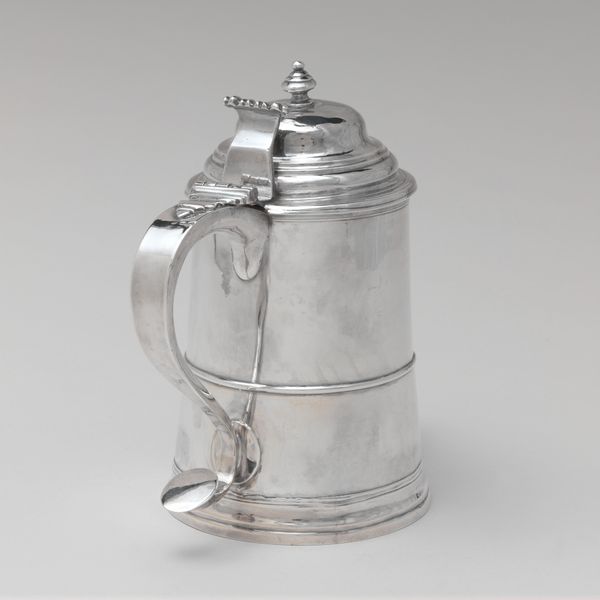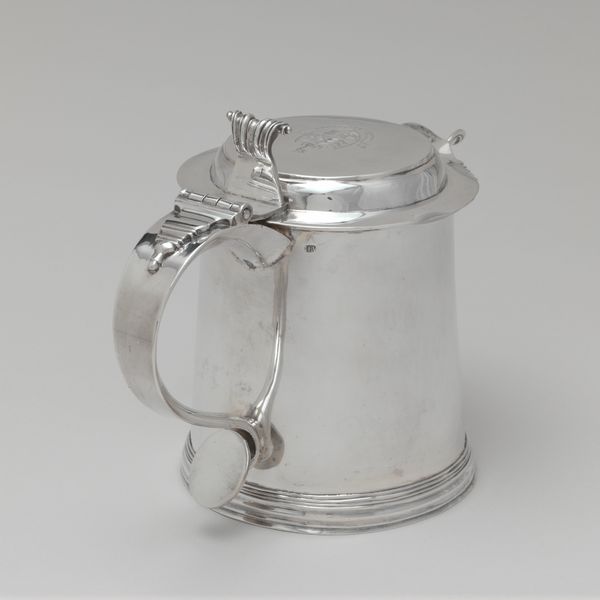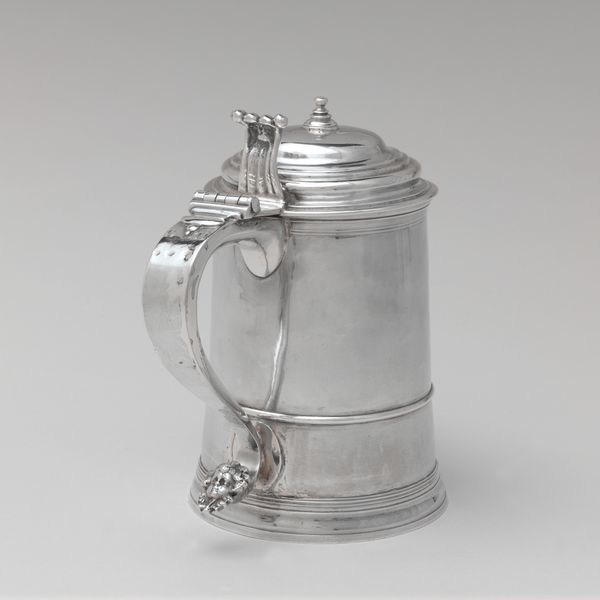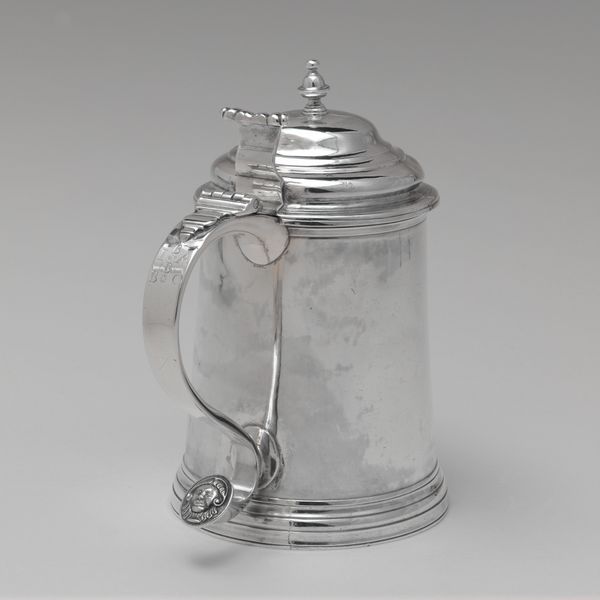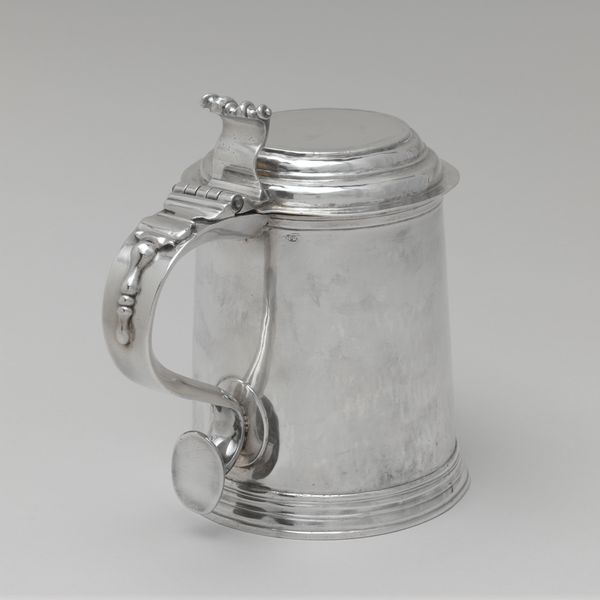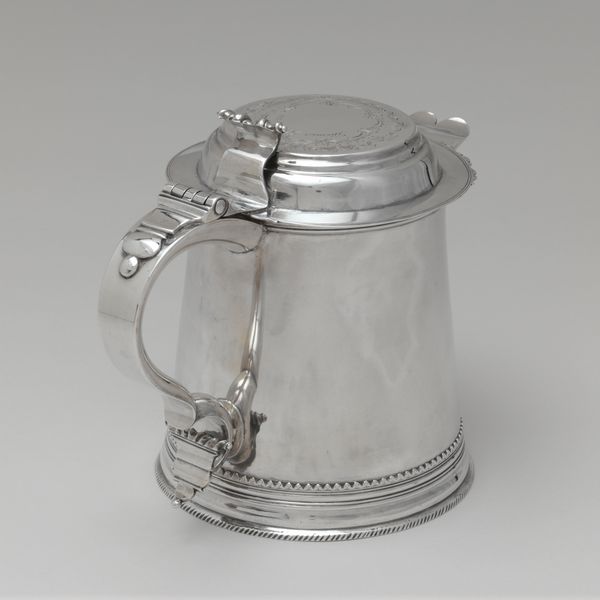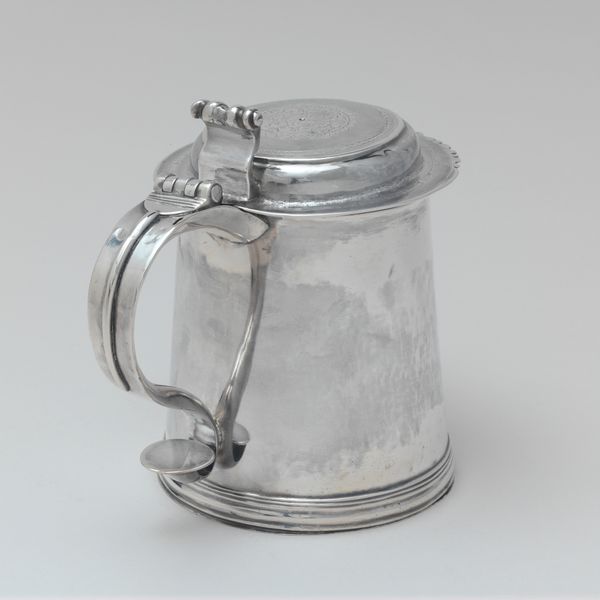
silver, metal, sculpture
#
studio photography
#
product photograph merchandise
#
product studio photography
#
product shot
#
silver
#
baroque
#
3d printed part
#
metal
#
product fashion photography
#
product design photgrpaphy
#
sculpture
#
metallic object render
#
united-states
#
graphic design product photography
#
product photography
Dimensions: Overall: 3 9/16 x 2 5/16 in. (9 x 5.9 cm); 2 oz. 16 dwt. (86.5 g) Base: Diam. 1 3/4 in. (4.4 cm) Body: 3 1/4 in. (8.3 cm); 2 oz. 6 dwt. (72 g) Cover: H. 7/8 in. (2.2 cm); 9 dwt. (14.5 g)
Copyright: Public Domain
Curator: This beautiful silver Pepper Box dates to the period 1720 to 1740 and currently resides here at The Metropolitan Museum of Art. It's a simple, elegant form. Editor: My first thought is how austere yet precious this little container looks. It almost feels monumental, despite undoubtedly being quite small. There’s a striking simplicity to the octagonal shape contrasting the glimmer of the polished silver. Curator: Precisely! The clean lines and the high polish were hallmarks of the emerging consumer culture of the time. Silverware like this, while functional, signaled social status. The production of such an item speaks volumes about colonial silversmiths mastering their craft, imitating European styles yet also catering to American tastes. We have to also consider how this was produced. What were the labor practices involved? The cost of the material? These shaped both its form and function. Editor: Good point. Considering its function highlights the role of trade and consumption in colonial society. Pepper, at this time, would have been a highly prized commodity. Owning a bespoke container underscores that power dynamic. Imagine the elaborate dining rituals! Think about the display. And even the implications regarding global exchange. The fact that such a functional, mundane object was elevated into something of an art form demonstrates interesting tensions within colonial society. Curator: Indeed, it is important to keep in mind who could commission, afford and utilize an object like this. These small things held vast amounts of social currency and cultural meaning. They represented and reinforced certain hierarchies. Editor: Thinking about this piece has also made me reflect on the power structures implicit in collecting and displaying it. Who gets to tell its story? What is prioritized when displaying something like this behind museum glass? What social norms are being both preserved and questioned? Curator: Agreed, understanding the journey of its material, fabrication, use and eventual exhibition reveals fascinating aspects of not only its production but how this object functions as a marker of cultural memory. Editor: It's amazing how much history is condensed within something so seemingly modest. A small pepper box, after all. Curator: It speaks volumes, doesn't it?
Comments
No comments
Be the first to comment and join the conversation on the ultimate creative platform.
